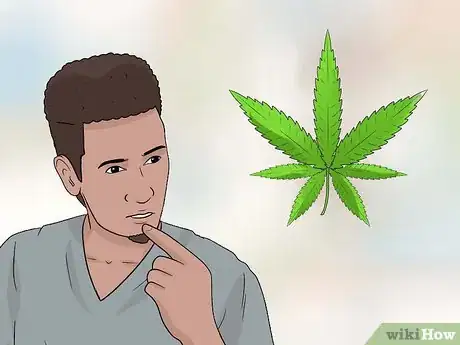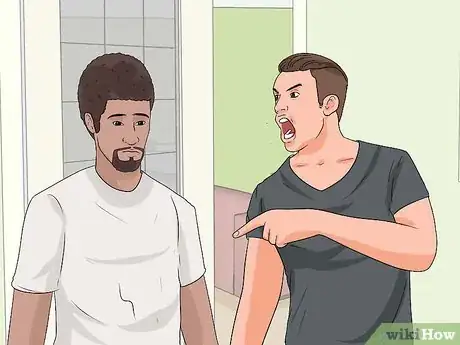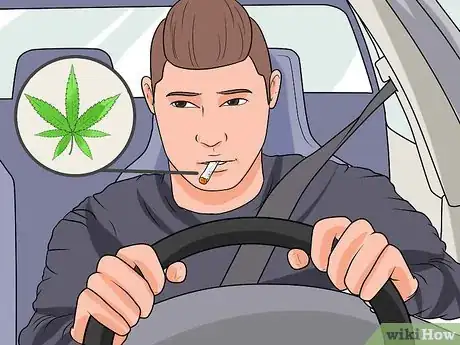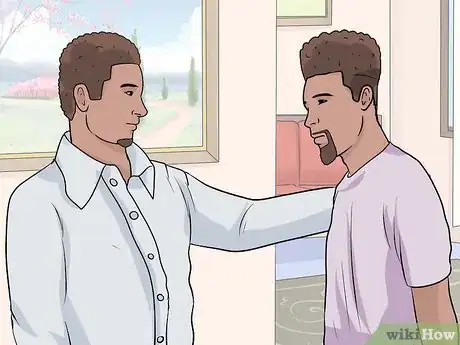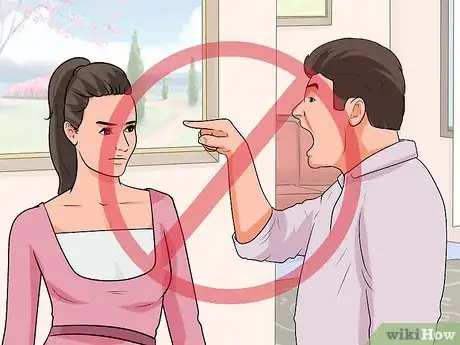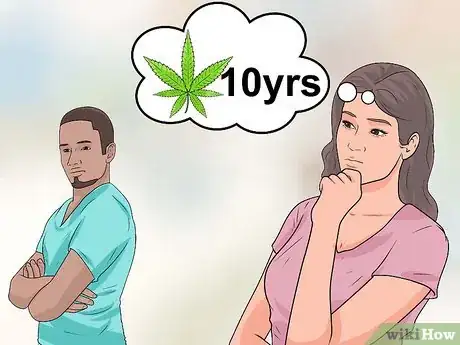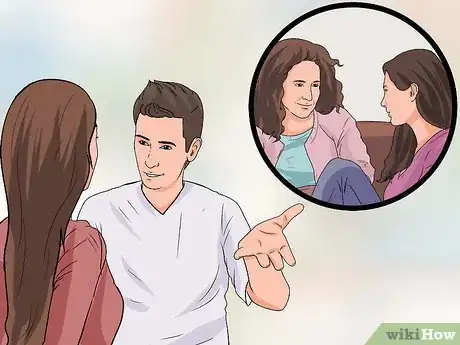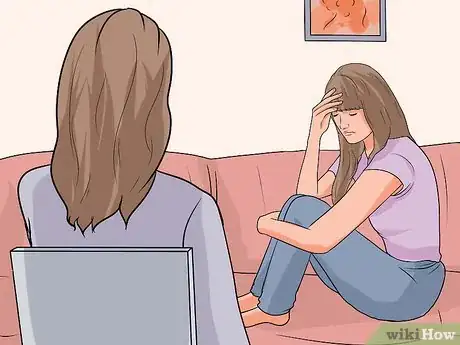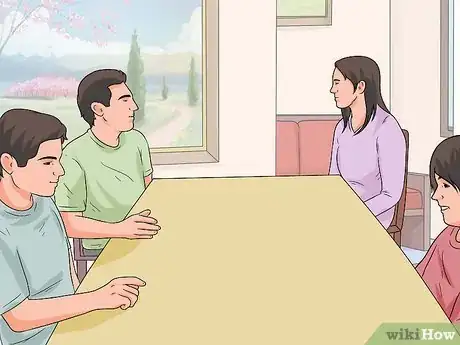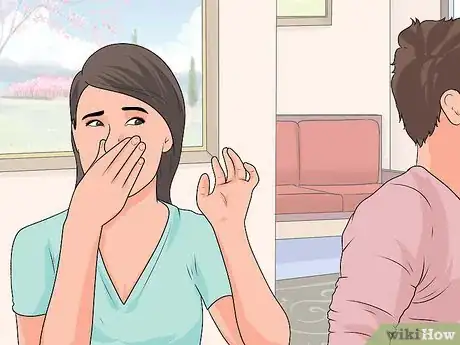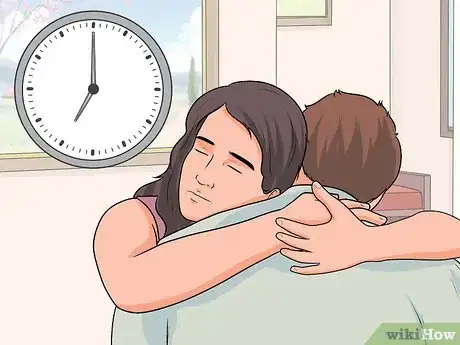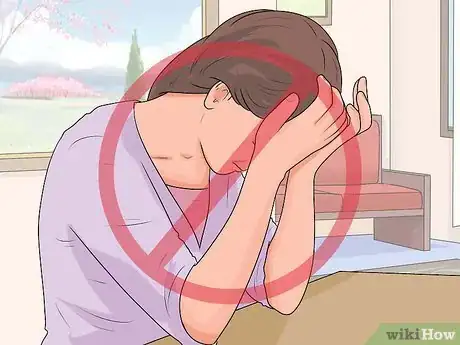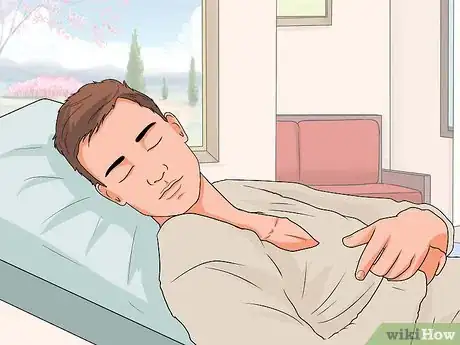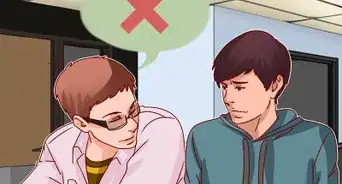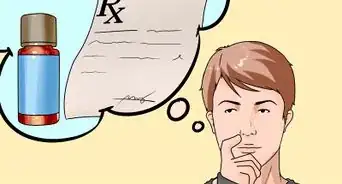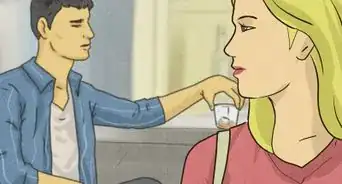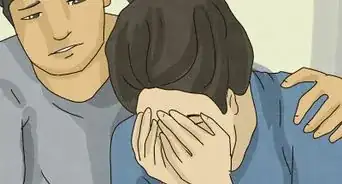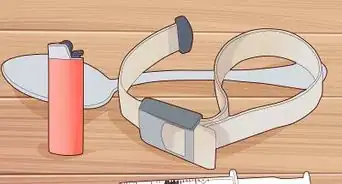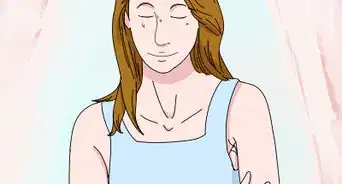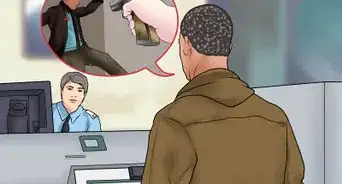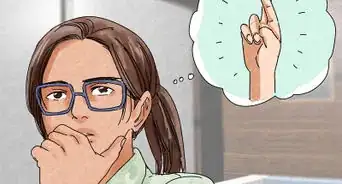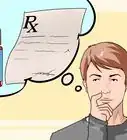This article was co-authored by Trudi Griffin, LPC, MS. Trudi Griffin is a Licensed Professional Counselor in Wisconsin specializing in Addictions and Mental Health. She provides therapy to people who struggle with addictions, mental health, and trauma in community health settings and private practice. She received her MS in Clinical Mental Health Counseling from Marquette University in 2011.
There are 10 references cited in this article, which can be found at the bottom of the page.
wikiHow marks an article as reader-approved once it receives enough positive feedback. In this case, 85% of readers who voted found the article helpful, earning it our reader-approved status.
This article has been viewed 693,277 times.
Many people think that the most harmful aspect of marijuana use is its potential to be a “gateway” drug—one that leads to the use of more dangerous and more addictive drugs. However, increased research has shown that marijuana can indeed lead to dependency on its own.[1] Those addicted to the drug can experience withdrawal symptoms when they try to stop using, experience declines in their achievements at work or school, ruin interpersonal relationships over their habit, and many other things typically associated with “harder” drugs. If you think someone you know is developing (or has already developed) a marijuana use disorder, you can help the person by knowing how to identify the addiction and how to help him or her overcome it.
Steps
Identifying Symptoms of Marijuana Addiction
-
1Learn the facts concerning marijuana and dependency. One of the biggest hurdles to helping someone with a marijuana dependency is proving that (despite popular belief) marijuana use can lead to addiction. Research has shown that overuse of marijuana can overstimulate certain systems in the body which will cause brain changes leading to addiction. It is estimated that 9 percent of people who use marijuana will become dependent, and 25-50 percent of daily users will become dependent.[2]
- Adolescents who use marijuana frequently are at risk for decreased IQ scores later in life with research finding that on this population’s IQ is decreased by about 8 points on average.[3]
- Additionally, a longitudinal study conducted over sixteen years found that marijuana users are four times more likely to develop depression than non-users.[4]
- Although not as common, abuse of medical marijuana or drugs containing cannabinoids (such as THC) can also occur. THC is just one of over 100 other cannabinoids that the marijuana plant contains.[5] Because cannabinoids have a large effect on the body—affecting everything from pleasure regulation and appetite to memory and concentration—they can have serious health effects when abused.[6]
-
2Look for symptoms of withdrawal when the person stops using marijuana. Marijuana can produce symptoms of withdrawal if frequent users discontinue use. Withdrawal is the body’s response to no longer having the drug in the system, and it is usually an indicator that there is physical dependence on the drug. Some of the withdrawal symptoms include:[7]
- Irritability
- Mood changes
- Difficulty sleeping
- Decreased appetite
- Cravings
- Restlessness
- Various forms of physical discomfort
Advertisement -
3Check for behavioral changes that indicate a marijuana use disorder. Other symptoms of dependency can affect the person’s behavior surrounding use of marijuana and not just reactions to not using it. In the past year, has the person:
- Used much more marijuana in one sitting than intended
- Tried to stop using marijuana but failed
- Had strong cravings or desire to use marijuana
- Used marijuana even though it caused or worsened symptoms of depression or anxiety
- Had to increase usage to achieve the same effects
- Had use interfere with personal responsibilities, school, or work
- Continued to use marijuana even though it caused fights or arguments with family or friends
- Stopped participating in previously important activities in order to use marijuana
- Used marijuana in situations where it may be dangerous, such as driving a car or operating machinery
Helping the Person Overcome the Addiction
-
1Know what to expect. Prepare yourself for excuses and denial from your loved one. He or she has likely adapted to marijuana use and does not see that it is an issue. You can prepare for the conversation by listing specific behaviors that worry you or that you have seen change for your loved one.
-
2Speak up. You as well as other friends and family should talk to the person about your concerns in a way that is supportive and nonjudgmental. Help the person see the changes the drug has caused in his or her life by helping the person to remember how they were in the past.[8]
- There may have been goals that your loved one gave up on when turning to marijuana as a way to cope.[9] Reminding your loved one of goals from the past may help him to see a brighter future with purpose.
-
3Support the person without enabling. Enabling behaviors—such as buying the person groceries or simply handing over money—only assist the person with perpetuating the addiction.[10] Set healthy boundaries with your loved one. Make sure the person knows that you will support them when they are ready to address their issue, but will not continue to provide support that helps them to continue their current behavior. Some examples of healthy boundaries include:
- Letting your loved one know that you are available for support and comfort but that drug use will no longer be allowed in your home
- Telling your loved one that you care for and love them, but that you will no longer be able to provide them money
- Telling the person that you will no longer make excuses for them or try to save them from the potential consequences of their drug use.
- Informing your loved one that while you care about them, you will not be able to drop everything to come to their aid for drug-related reasons
-
4Avoid approaches likely to cause additional conflict. Trying to punish the person, preach at the person, or manipulate the person to quit using (such as with guilt) will only lead to further conflict.[11] The loved one may even decide that you’re “against” them and stop trying to reach out for help at all. Other behaviors to avoid include:[12]
- Arguing with the person for using
- Attempting to hide of throw away the person’s marijuana stash
-
5Determine if the person is ready for treatment. On average, those who seek treatment for marijuana addiction (or marijuana use disorder) are adults who have used marijuana for ten years or more and who have tried to quit using six or more times.[13] The most important part is for the person to want to quit using. You can’t monitor anyone twenty-four hours a day, so you have to be able to depend on the person’s will to stop using.
-
6Assist with finding a therapy to which the person responds. Individuals can seek treatment for marijuana use disorder through individual or group therapies. The process may be one of trial and error to find what works for your loved one. Therapies used to treat marijuana and other substance-use disorders include:[14]
- Cognitive-behavioral therapy (CBT) - CBT is used to teach strategies to identify and correct thoughts and behaviors to enhance self-control, stop drug use, and handle other issues that may occur.
- Contingency management - This approach uses frequent monitoring of the target behavior and the use of positive reinforcement to help modify behavior.
- Motivational enhancement therapy - This therapy aims to produce changes internally driven by the addict’s own motivation to stop using.
- Seeing a therapist during this period may also help the person confront the issues that led to marijuana use as a coping mechanism in the first place.
- There are no medications on the market for the addiction counselor (via a psychiatrist) to prescribe to treat marijuana addiction.[15] However, a physician may prescribe medication for peripheral issues to help the person with anxiety, depression, or sleep disorders as he or she beats the dependency.[16]
-
7Look into treatment facilities. Actual treatment facilities for drug addiction can provide a stronger, more consistent environment for the person to beat his or her addiction. The constant monitoring and supervision of many of these facilities is suited toward those who desperately want to quit but whose willpower can falter in the face of dependency.
- Marijuana addiction accounts for up to 17 percent of those in treatment facilities for addictions.[17]
-
8Look into group treatment options. Support groups for marijuana addiction—such as Marijuana Anonymous—seek to help attendees maintain motivation, learn coping skills, manage thoughts and feelings, and learn about balance and self-care.[18]
-
9Watch for signs of relapse. Despite the best efforts of you and the rest of the person’s support system, relapse is always a possibility. If you think the person may have relapsing into using again, keep an eye out for the following signs:[19]
- Changes in appetite, sleep, or weight changes
- Red and/or glassy eyes
- Changes in appearance or personal hygiene
- Unusual (skunky) smells on the person’s body, breath, or clothing
- Reduced performance at school or work
- Suspicious requests for money or outright stealing money from family or friends
- Unusual or suspicious behavior
- Changes in friends or activities
- Changes in motivation or energy
- Changes in interpersonal style or attitude
- Changes in mood, frequent or sudden irritability, or anger outbursts
-
10Have patience. If the person relapses, especially fully as opposed to momentarily, you may feel as though you're starting the process from the beginning again. The best thing you can do for the person in this scenario is have patience. Try as hard as you can to show the same love and support as you did before. Continue refusing to enable the addiction and offer the same assistance with finding treatment.
-
11Avoid self-blame. You can offer your support, love, and encouragement to your loved one, but remember that you can not make this person change. You cannot control his or her behavior or decisions. Letting your loved one accept responsibility will move your loved one closer to recovery. Being assertive through the process can be painful, but you should never let yourself:[20]
- Try to take the person’s responsibilities
- Give into feelings of guilt over the person’s choices or actions.
-
12Take care of yourself. Do not let your loved one’s issue become your main concern to the point that you forget or refuse your own needs. Make sure you have people to support you through this hard time, and seek out people you can talk to when things get tough. Continue to care for yourself and allow time for relaxation and stress relief.
References
- ↑ https://www.drugabuse.gov/publications/research-reports/marijuana/marijuana-addictive
- ↑ http://www.drugabuse.gov/publications/research-reports/marijuana/marijuana-addictive
- ↑ https://www.drugabuse.gov/publications/research-reports/marijuana/what-are-marijuanas-long-term-effects-brain
- ↑ http://www.addictionsandrecovery.org/marijuana.htm
- ↑ http://www.drugabuse.gov/publications/drugfacts/marijuana-medicine
- ↑ http://www.drugabuse.gov/publications/drugfacts/marijuana-medicine
- ↑ http://www.smartrecovery.org/addiction/marijuana.htm
- ↑ http://www.narconon.org/drug-rehab/help-someone-stop-weed.html
- ↑ http://www.narconon.org/drug-rehab/help-someone-stop-weed.html
- ↑ https://www.psychologytoday.com/us/blog/the-anatomy-addiction/201207/are-you-empowering-or-enabling
- ↑ http://www.helpguide.org/articles/addiction/drug-abuse-and-addiction.htm
- ↑ http://www.helpguide.org/articles/addiction/drug-abuse-and-addiction.htm
- ↑ http://www.drugabuse.gov/publications/research-reports/marijuana/available-treatments-marijuana-use-disorders
- ↑ http://www.drugabuse.gov/publications/research-reports/marijuana/available-treatments-marijuana-use-disorders
- ↑ http://www.drugabuse.gov/publications/research-reports/marijuana/available-treatments-marijuana-use-disorders
- ↑ http://www.drugabuse.gov/publications/research-reports/marijuana/available-treatments-marijuana-use-disorders
- ↑ http://www.smartrecovery.org/addiction/marijuana.htm
- ↑ http://www.smartrecovery.org/addiction/marijuana.htm
- ↑ http://www.helpguide.org/articles/addiction/drug-abuse-and-addiction.htm
- ↑ http://www.helpguide.org/articles/addiction/drug-abuse-and-addiction.htm
About This Article
To help someone overcome a marijuana addiction, you’ll need to confront your loved one. Prepare for your conversation by thinking about worrisome behaviors or changes you've noticed so you can give your loved one examples of what you're seeing. As you begin your talk, try to approach them with love and compassion rather than judgment. Make sure they know you’ll support them when they’re ready to address their addiction, but that you need to set boundaries, which include not handing over money, not buying groceries for them, and not letting them stay with you for free. If the person is ready for help, help them research support groups or treatment facilities. To learn how to watch for signs of relapse, keep reading.
